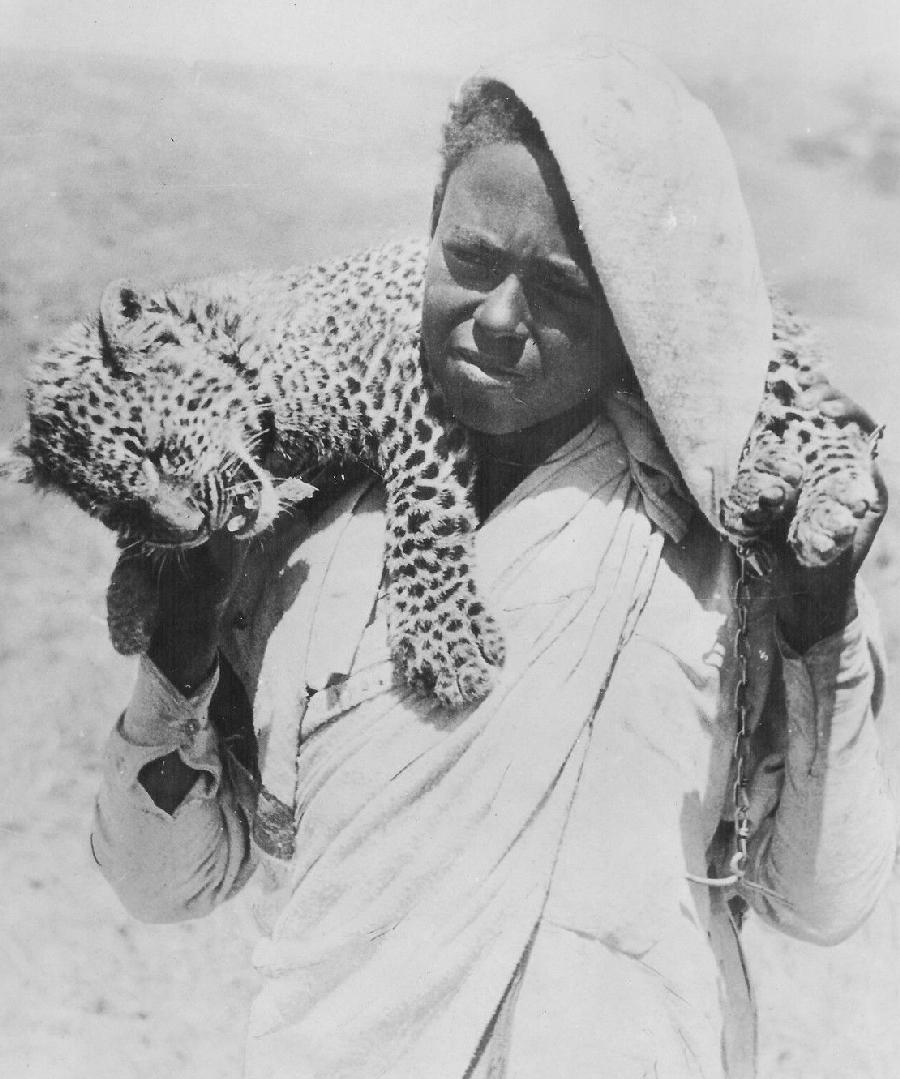***
World War II early Italian aggressions -- Ethiopian prparations

Early Italian Aggressions: Ethiopia--Ethiopian Preparation (1934-35)

Figure 1.--This Ethiopian boy in 1935 is off to the front lines as the Itlaian forces invading Ethiopia drive toward Adis Ababa. The press caption read, "Mascot in bad temper: This young Ethipian warrior took his pet leopard with him as a mascot as he marched out of Addis Ababa for the war zone recently. He had come to Addis Ababa to pay homage to Emperor Haile Selassie. It was, probably , the first time the young warrior had been away from his home province. He attended a gigantic review before the Emperor prior to leaving for the front." The photograph was dated November 5, 1935.
|
|
While the Western democracies approached the Italian Government diplomatically, no country offered military assistance to Ethiopia. In fact, Italy was permitted to increase purchases of strategic material, including oil and items like trucks that the Italian Army needed, but we not classified as 'war material'. [State Deartment] Finally as the Italians built up their forces in Eritrea and Somaliland, Emperor Haile Selassie ordered a general mobilization of the Ethiopiam Imperial Army. Some 0.5 million men were recruited. There were, however, no modern arms for them. Many had only spears or bows and arrows. Many soldiers had rifles, most of pre World War I vintage. Some estimate about 0.4 million rifles of any different types. Precise statistics do not exist, but various sources suggest an Ethiopian Army of some 0.4-0.8 million men. Only a fraction, perg[s one-fourth, had ant form of military training. There was an almost total lack of heavy weapons. One report suggests 200 antiquated pieces of artillery mounted on rigid gun carriages. There were about 50 light and heavy anti-aircraft guns (20 mm Oerlikons, 75 mm Schneiders, and Vickers). There were a few Ford truck-based armored cars and Fiat 3000 World War I-era tanks. [Barker, p. 29.] The air force totaled 13 aircraft (mostly ambulance planes) and four pilots. The Air Force commander was a French pilot, Andre Maillet. The most effevtive Ethiopian units were the Emperor's "Imperial Guard" (Kebur Zabangna). These troops were well-trained and had some modern arms. The Imperial Guard was easily destinguishable. They wore easily recognizable khaki-green uniforms provided bu the Belgian Army. They thus stood out from the white cotton cloak (shamma) worn by most of the Ethiopian soldiers. The Rases, or generals in the Ethiopian armies, had no real military experience and proved incompetent.
Sources
Barker, A.J. Rape of Ethiopia, 1936 (Ballantine Books: New York, 1971).
CIH

Navigate the CIH World War II Pages:
[Return to Main Italian invasion of Ethiopia page]
[Return to Main early-Italian aggression page]
[Biographies]
[Campaigns]
[Children]
[Countries]
[Deciding factors]
[Diplomacy]
[Geo-political crisis]
[Economics]
[Home front]
[Intelligence]
[POWs]
[Resistance]
[Race]
[Refugees]
[Technology]
[Bibliographies]
[Contributions]
[FAQs]
[Images]
[Links]
[Registration]
[Tools]
[Return to Main World War II page]
[Return to Main war essay page]
Created: 2:58 AM 4/22/2014
Last updated: 2:58 AM 4/22/2014



